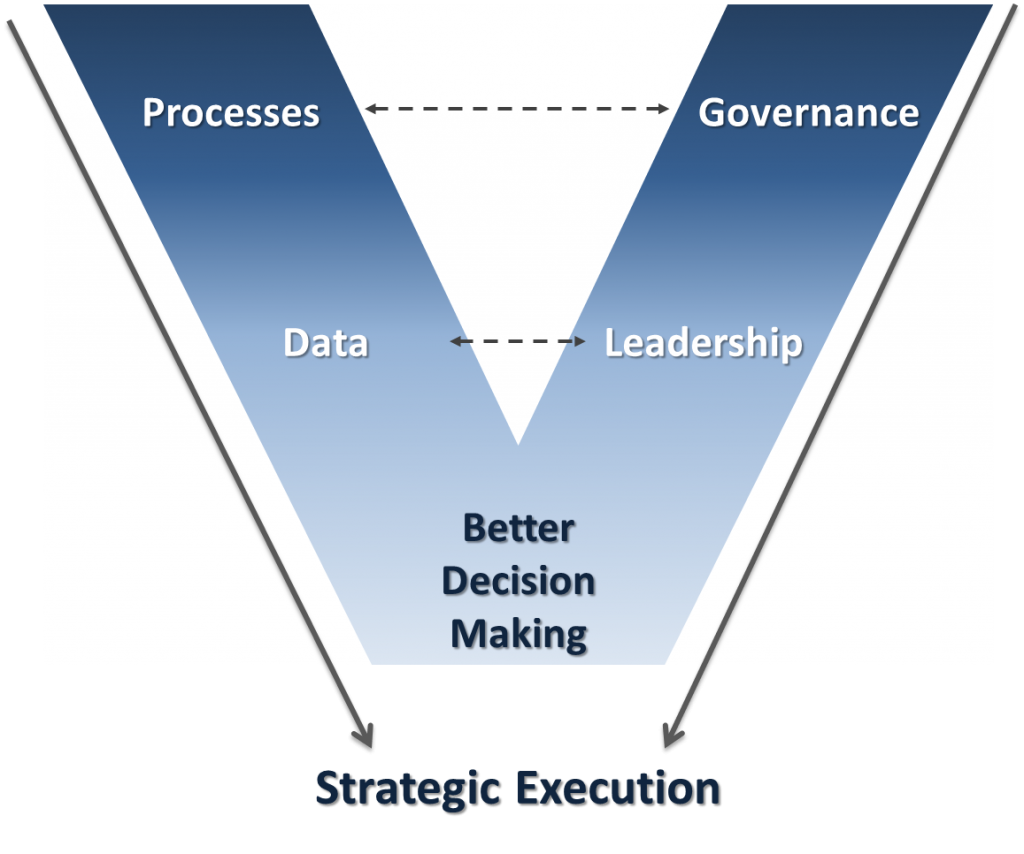I recently constructed a portfolio management-oriented V-model. The traditional V-model has been used in software and product development, but this PPM variant differs in that the end result comes together at the point of the V. This is not an exhaustive list of PPM components, but does represent critical components and how they come together to drive better decision making resulting in optimal strategic execution. The model also makes a big assumption that the organization has sufficient strategy development capabilities in place.
Let’s work backwards (from the point back to the tips of the V) to understand how components on the left side supports the model.
One of the primary goals (if not the foremost goal) of portfolio management is to execute strategy. There is an important distinction between strategy creation and strategic execution. Possessing a strategy (and spending the energy to create one) is meaningless if the organization cannot accomplish the strategic goals. Although many people acknowledge that strategic projects are vehicles for a accomplishing a strategy, senior leadership needs to make the right project decisions at the right time to advance the goals of the company. Hence, making smarter and better decisions is a precursor for solid strategic execution.
In order to make smarter and better decisions, the right data needs to be available at the right time. I have written about this in the past. Senior leaders should know what data is important and valuable for making the right decisions at the right time. Data collection costs money as does data analysis. Organizations should be mindful of the amount of effort needed to collect data and only collect data that is most important to the company. In another post, I wrote about a virtuous data cycle by which senior leaders need to actually use the data collected, communicate that the data is being used, and explain how the data is being used. This will encourage higher quality data collection resulting in better decision making. However, in order for the right data to be collected at the right time, processes need to be in place to facilitate the data collection process. Processes for work in-take, business case development, status updates, and resource management help provide the right data in the portfolio management lifecycle to promote better decision making.
The next post will explore the right side of the model and tie all the points together.

